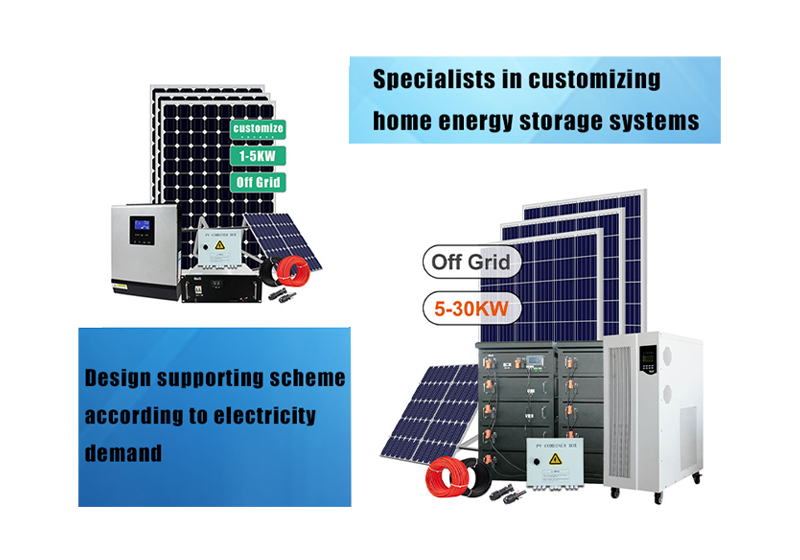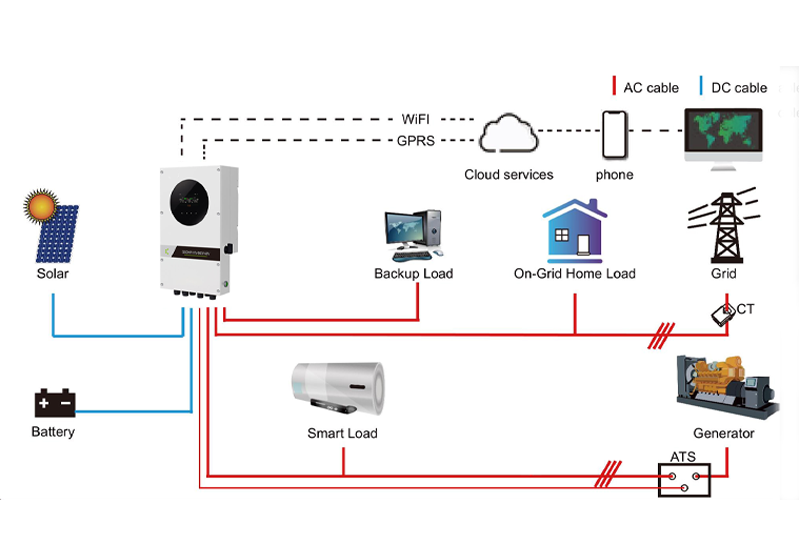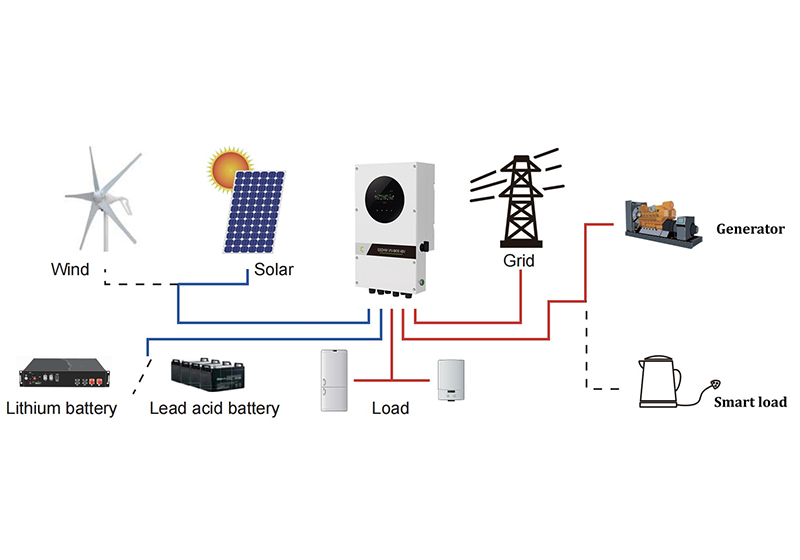Email format error
Email cannot be empty
Email already exists
6-20 characters(letters plus numbers only)
The password is inconsistent
Email format error
Email cannot be empty
Email does not exist
6-20 characters(letters plus numbers only)
The password is inconsistent


Composition and working principle of photovoltaic power generation system
Photovoltaic power generation system mainly consists of photovoltaic modules, controllers, inverters, batteries and other accessories (grid-connected does not need batteries).
Regardless of the form, the working principle is that the PV module converts the light energy into DC power, and the DC power is converted into AC power under the action of the inverter, which ultimately realizes the function of power consumption and Internet access.

1、Photovoltaic Module
Photovoltaic module is the core part of the whole power generation system, which is composed of photovoltaic module sheets or photovoltaic modules of different sizes cut by laser cutting machine or steel wire cutting machine. Since the current and voltage of a single PV cell are very small, it should be connected in series to obtain high voltage, and then connected in parallel to obtain high current, and then output through a diode (to prevent the current from being fed back), and then encapsulated in a stainless steel, aluminum, or other non-metallic frame, installed on the top of the glass and back of the back plate, filled with nitrogen gas, sealed. PV modules in series, parallel combination, it becomes a photovoltaic module square array, also known as photovoltaic array.
Principle of operation: sunlight in the semiconductor p-n junction, the formation of new hole - electron pairs, in the p-n junction under the action of the electric field, the hole from the p region flows to the n region, the electron from the n region flows to the p region, connecting the circuit to form a current. Its role is to convert solar energy into electricity and send it to the battery to be stored or to push the load to work.
Module type:
① monocrystalline silicon: photoelectric conversion rate ≈ 18%, up to 24%, is the highest conversion rate of all photovoltaic modules, generally using tempered glass and waterproof resin encapsulation, rugged and durable, the service life of the general up to 25 years.
Polycrystalline silicon: photoelectric conversion rate of ≈ 14%, and monocrystalline silicon production process is almost the same, polycrystalline silicon is the difference between the photoelectric conversion rate is lower, lower prices, shorter life, but polycrystalline silicon material manufacturing simple, saving power consumption, low production costs, and therefore has been vigorously developed.
③ amorphous silicon: photoelectric conversion rate of ≈ 10%, and monocrystalline silicon and polycrystalline silicon production method is completely different, is a thin film solar cells, the process is greatly simplified, the consumption of silicon materials is very little, power consumption is lower, and its main advantage is that it can also generate electricity in the low light conditions.

2、Controller (for off-grid system)
Photovoltaic controller is an automatic control device that can automatically prevent overcharging and over-discharging of the battery. Adopting high-speed CPU microprocessor and high-precision A/D analog-to-digital converter, it is a microcomputer data acquisition and monitoring control system, which not only can quickly and real-time collect the current working status of the PV system and obtain the working information of the PV station at any time, but also can accumulate the historical data of the PV station in detail, which can provide an accurate and sufficient basis for evaluating the reasonableness of the design of the PV system and checking the reliability of the system components quality, and also has the function of It also has the function of serial communication data transmission, which can centralize the management and long-distance control of multiple PV system substations.
3、Inverter
The inverter is a device that converts the DC power generated by PV power generation into AC power. The PV inverter is one of the important system balances in the PV array system, which can be used with the general AC power supply equipment. Solar inverters have special functions to match PV arrays, such as maximum power point tracking and islanding effect protection functions.
Solar inverters can be categorized into the following three types:
① Stand-alone inverters: Used in stand-alone systems where the PV array charges the batteries and the inverter uses the DC voltage from the batteries as the energy source. Many stand-alone inverters also integrate a battery charger that can charge the battery with AC power. Generally, this type of inverter is not exposed to the grid and therefore does not require islanding protection.
Grid-connected inverter: The output voltage of the inverter can be fed back to the commercial AC power source, so the output waveform needs to be in the same phase, frequency and voltage as the power source. Grid-connected inverters will have a safety design that automatically shuts down the output if it is not connected to the power supply. If the grid power supply is tripped, the grid-tie inverter has no function of backup power supply.
③ Backup Battery Inverter: A special type of inverter that uses batteries as its power source, with a battery charger in it to charge the batteries, and if there is too much power, it will be recharged back to the AC power source. This kind of inverter can provide AC power to the specified load when the grid power jumps, so it needs to have the islanding effect protection function.
4. Battery (not required for grid-connected systems)
Battery is a photovoltaic power generation system to store electricity equipment. Currently used lead-acid maintenance-free batteries, ordinary lead-acid batteries, colloidal batteries and alkaline nickel-cadmium batteries, widely used lead-acid maintenance-free batteries and colloidal batteries.
Working principle: during the daytime sunlight irradiation to the photovoltaic module, generating DC voltage, the light energy is converted into electricity, and then transmitted to the controller, after the controller's overcharge protection, the photovoltaic module will be transmitted to the storage battery for storage, for use when needed.

